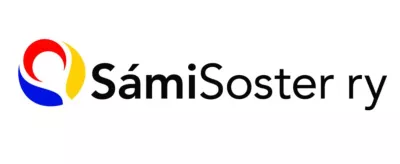General information
RDP Priority
- P6. Social inclusion and local development
RDP Focus Area
- 6B: Local development
RDP Measure
- M07: Basic services & village renewal
Beneficiary type
- Public authority / body
Summary
The Sámi are an indigenous population from northern Scandinavia. This rural development project’s purpose was to develop the availability and accessibility of Sámi language and Sámi culture-based services through digitalisation. It also created new digital service models and helped older Sámi members use digital services.
The activities of the SaameDigi project were versatile and tailored to the needs of older people. Sámi language was the cornerstone for demonstrating how digital activities can facilitate Sámi well-being, while promoting a sense of community, as well as the inclusion and safety of the Sámi people.
Results
Overall the project achieved a range of results including:
- 46 events;
- Personal digital guidance for 115 people;
- Weekly meeting places organised in cooperation with the Birgen Ruovttus project (391 visitors); and
- Strengthened civic and digital skills, as well as increased social well-being.

Promoter
ELY Centre for Lapland
Funding
Total budget: 130 750 (EUR)
EAFRD: 54 915 (EUR)
National/Regional: 75 835 (EUR)
Keywords
Ressources
Documents
Good practice report : SaameDigi (SámiDigi)
(PDF – 3.91 Mo)
Context
Finnish society is becoming digitalised more and more rapidly as services are increasingly becoming electronic. At the same time, indigenous people from the Sámi population are ageing, particularly in the outermost parts of the Sámi homeland.
Three different Sámi languages are spoken in Finland: Northern Sámi, Inari Sámi, and Skolt Sámi. The Sámi languages are endangered, and an attempt is being made to revive them. The situation of linguistic minorities is difficult because there is little digital content available in Sámi languages.
Risks exist that an ageing population will become marginalised and end up in an unequal position due to their weaker digital skills. The remit of the SámiSoster association is to help the SaameDigi project tackle this current challenge.
Objectives
This rural development project aimed to:
- Improve the digital skills of the older Sámi-speaking population;
- Create new digital service models in the region;
- Expand availability and accessibility of Sámi-language services;
- Prevent social and digital exclusion;
- Improve digital skills of other groups at risk of exclusion;
- Increase use of the Sámi language;
- Strengthen the sense of community of the Sámi people; and
- Better support the comfort and well-being of the Sámi population.
Activities
The project involved the following series of complementary actions:
- Digital training for SamiSoster's personnel;
- Advisory meetings;
- More than 10 Digital Days around the Sámi Homeland;
- Digital language cafés in different localities in all three Sámi languages; and
- Digital meetings between different localities; some participated remotely in weekly meetings due to long distances. For example, the residents of the Toimintatupa activity centre in the Nellimi village convened at a lean-to shelter, where a remote connection to Utsjoki village (distance 205 km) was set up.
Main results
Overall, the project achieved a range of results, including:
- 46 events;
- Personalised digital guidance for 115 people;
- Weekly meeting places organised in cooperation with the Birgen Ruovttus project (391 visitors); and
- Strengthened civic and digital skills as well as increased social well-being.
Sámi-language Digital Days adapted for older people provided successful results. During these campaign days, digital guidance created a foundation for competence, and encouraged computer skills such as searching for information and using different programs. In addition, a video on how to use a computer was produced to help create preconditions for older people to be able to use electronic services independently.
Key lessons
- The SaameDigi project is an interesting example for Member States with linguistic minorities. The project can replicate models for organising activities for linguistic minorities and strengthening digital skills.
- Digital language cafés were an excellent form of operation. Together, the participants experimented in practice with how to meet other people online, how everyone can participate in the activities and speak their own language at meetings, and how to share stories. The language cafés were implemented in all three Sámi languages and between different municipalities. It was possible to participate in the language café either from home or from one of SámiSoster's offices.
I think the project was a great success! I am very proud that SámiSoster ry succeeded in increasing the use of the Sámi language in digital meetings, encouraging the use of electronic services, and inspiring the participants to follow various events that are broadcast virtually, such as religious services, Sámi music festivals, and Sámi Parliament meetings. I am also proud of the fact that SásamidmiSoster ry is an ”ofelaš”, i.e. a pioneer, in the development and use of digital means and modes of operation in order to promote equality among the Sámi, strengthen the Sámi community, and support the use of the Sámi language. The digital spark has been lit!
Contact Information
Email: heidi.hannula@ely-keskus.fi
